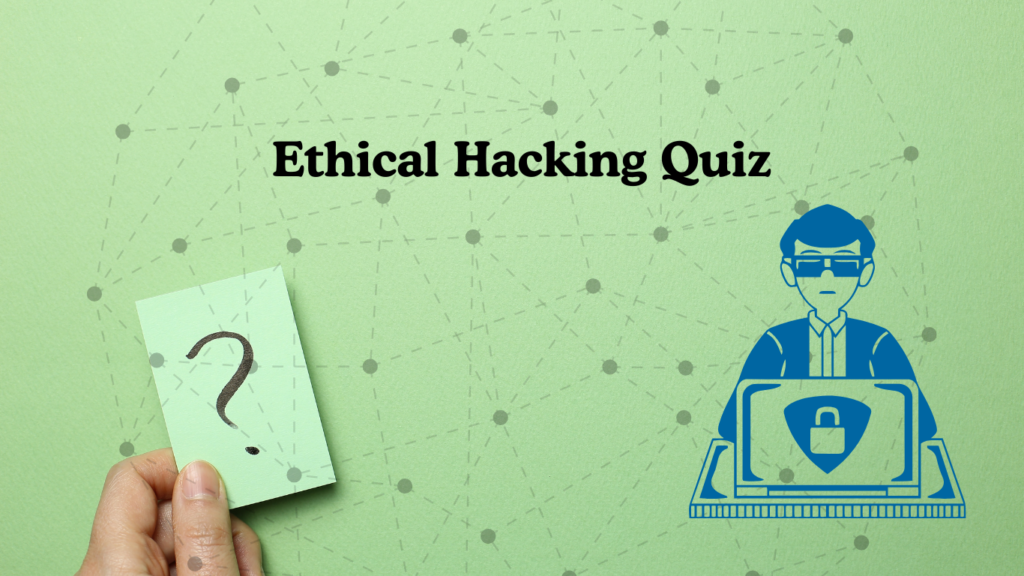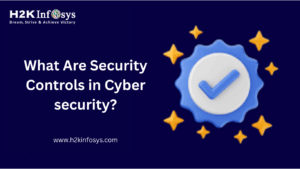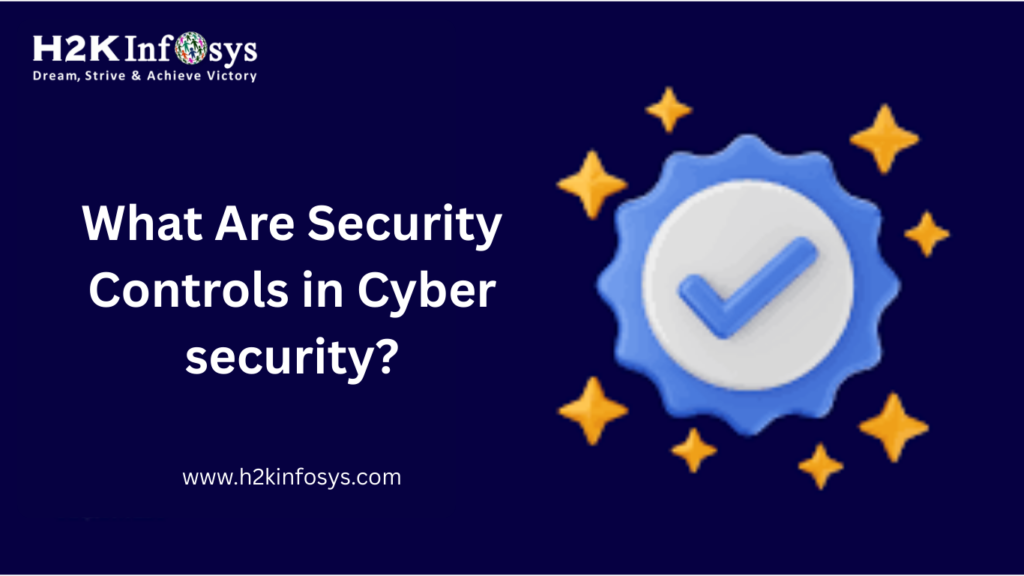Introduction
Ethical hacking is a legal and structured method used to test systems, networks, and applications for vulnerabilities. It mirrors real-world hacking techniques but is performed with authorization to improve security. Students preparing for CEH Certification or Online classes cyber security often search for dependable Ethical Hacking Quiz Answers because quizzes help test your understanding of scanning, footprinting, social engineering, malware behavior, and more.
Many learners feel confused due to technical terminology. This blog breaks everything down into easy, direct, and clear explanations. Each section includes examples similar to what appears in real Ethical Hacking exams. These explanations also help during interviews, practical assessments, and hands-on project work included in Cyber security training and job placement programs. Ethical Hacking Quiz Answers also support students by simplifying complex topics into understandable points.
Footprinting and Reconnaissance
Footprinting is the first phase of ethical hacking. It helps the tester gather information about the target before performing any attack simulation. Many Ethical Hacking Quiz Answers begin with this concept because it forms the base for the entire security assessment.
Types of Footprinting
- Passive footprinting (public data collection)
- Active footprinting (direct interaction)
Quiz questions
Q1. What is the main purpose of footprinting?
A. To exploit vulnerabilities
B. To gather information about the target
C. To perform DoS attacks
D. To encrypt data
Correct Answer: B (To gather information about the target)
Q2. Which of the following is a passive footprinting method?
A. Port scanning
B. OS fingerprinting
C. Social media research
D. Banner grabbing
Correct Answer: C (Social media research)
Q3. Which tool is used to gather DNS information?
A. Burp Suite
B. NSLOOKUP
C. Metasploit
D. John the Ripper
Correct Answer: B ( NSLOOKUP)
Q4. What type of information is usually collected during footprinting?
A. Malware signatures
B. Password hashes
C. Domain and IP details
D. Kernel exploits
Correct Answer: C (Domain and IP details)
Practical Example
A tester gathers DNS records using WHOIS and NSLOOKUP. This is often found in entry-level Ethical Hacking Quiz Answers.
Collecting information legally and carefully is a major skill taught in Cyber security training, especially for students who aim to work in penetration testing roles.
Scanning and Enumeration
Scanning helps identify systems, ports, and services running on the network. It is one of the most common topics found in Ethical Hacking Quiz Answers.
Q1. Which tool is most commonly used for port scanning?
A. Wireshark
B. Nmap
C. Hydra
D. Nikto
Correct Answer: B (Nmap)
Nmap Example
nmap -sV -O 10.0.0.1
This command detects running services and the operating system. Students practice this repeatedly in Cyber security course and job placement programs to prepare for real employment by Ethical Hacking Quiz Answers.
Q2. What does a SYN scan do?
A. Completes the entire TCP handshake
B. Sends a SYN packet to check open ports
C. Performs a denial-of-service attack
D. Tracks encrypted packets
Correct Answer: B (Sends a SYN packet to check open ports)
Q3. Enumeration is used to identify what?
A. Wireless routers
B. Usernames, shares, and system details
C. Power supply failures
D. Malware signatures
Correct Answer: B (Usernames, shares, and system details)
Q4. Which protocol is often used during enumeration?
A. SNMP
B. FTP
C. SSH
D. SMTP
Correct Answer: A (SNMP)
Enumeration focuses on identifying user accounts, network shares, and system details. Quizzes often ask about LDAP enumeration, SMB enumeration, and SNMP enumeration.
Mastering these concepts helps you perform well in CEH Certification assessments by Ethical Hacking Quiz Answers.
System Hacking Techniques
System hacking questions appear frequently in Ethical Hacking Quiz Answers because they test a learner’s ability to think like an attacker while acting responsibly.
Common Methods
- Hash cracking with Hashcat
- Brute-force attacks
- Keylogging
- Privilege escalation
Q1. Which file holds password hashes in Windows systems?
A. Boot.ini
B. SAM file
C. Winlogin.exe
D. System32.ini
Correct Answer: B ( SAM file)
Q2. What is privilege escalation?
A. Installing new software
B. Gaining higher access rights
C. Changing user passwords
D. Closing unused ports
Correct Answer: B (Gaining higher access rights)
Q3. Which tool is commonly used for password cracking?
A. John the Ripper
B. Wireshark
C. Nessus
D. PuTTY
Correct Answer: A (John the Ripper)
Q4. Keylogging helps the attacker to do what?
A. Encrypt files
B. Record keystrokes of a user
C. Scan open ports
D. Capture network traffic
Correct Answer: B (Record keystrokes of a user)
Example
A tester uses a keylogger to analyze keyboard activity during a controlled penetration test. This helps uncover security gaps in user authentication methods.
These skills are practiced in Cybersecurity training and placement labs, helping students apply theoretical knowledge in practical scenarios through the Ethical Hacking Quiz Answers.
Malware Threats and Countermeasures
Malware questions are a big part of CEH exams. This is why many Ethical Hacking Quiz Answers focus on identifying malware types and behavior.
Common Malware Types in Quizzes
- Virus
- Worm
- Trojan
- Ransomware
- Rootkits
- Botnets
Q1. Which malware spreads without needing a host file?
A. Virus
B. Worm
C. Trojan
D. Rootkit
Correct Answer: B (Worm)
Q2. What does ransomware do?
A. Deletes browser history
B. Encrypts user data and demands payment
C. Installs drivers
D. Speeds up the system
Correct Answer: B (Encrypts user data and demands payment)
Q3. Which malware appears legitimate but contains malicious code?
A. Trojan
B. Worm
C. Botnet
D. Adware
Correct Answer: A (Trojan)
Q4. Rootkits are commonly used to do what?
A. Open ports
B. Hide malicious activity
C. Create user accounts
D. Block firewalls
Correct Answer: B (Hide malicious activity)
Students in Online courses for cybersecurity learn how attacks occur and how to remove malware using standard analysis tools.
Sniffing and Packet Analysis
Packet sniffing helps test the security of live network traffic. Many Ethical Hacking Quiz Answers include Wireshark-related questions.
Q1. Which tool is widely used for packet sniffing?
A. Burp Suite
B. Wireshark
C. Hydra
D. Nmap
Correct Answer: B (Wireshark)
Q2. What is the purpose of sniffing?
A. Cracking passwords
B. Capturing and analyzing network traffic
C. Removing logs
D. Installing rootkits
Correct Answer: B (Capturing and analyzing network traffic)
Q3. Which protocol is vulnerable to sniffing attacks?
A. HTTPS
B. SSH
C. Telnet
D. FTPS
Correct Answer: C (Telnet)
Q4. Packet sniffing is mostly performed in which mode?
A. Silent mode
B. Monitor mode
C. Active mode
D. Binary mode
Correct Answer: B (Monitor mode)
Example
A cybersecurity analyst uses Wireshark to inspect suspicious login requests. This real-world skill is taught in H2K Infosys Cyber security training with job placement programs.
Social Engineering Attacks
Social engineering exploits human behavior. Many CEH quizzes include questions on phishing, vishing, and baiting. You will find these repeated in multiple Ethical Hacking Quiz Answers.
Q1. What is phishing?
A. Scanning open ports
B. Sending fake messages to steal data
C. Encrypting system files
D. Testing system performance
Correct Answer: B (Sending fake messages to steal data)
Q2. Which type of social engineering uses phone calls?
A. Smishing
B. Phishing
C. Vishing
D. Baiting
Correct Answer: C (Vishing)
Q3. Baiting attacks rely on what?
A. Fake websites
B. Curiosity or greed
C. Server misconfigurations
D. Network congestion
Correct Answer: B (Curiosity or greed)
Q4. Tailgating involves:
A. Password cracking
B. Following someone into a restricted area
C. Port scanning
D. Malware deployment
Correct Answer: B (Following someone into a restricted area)
Example
Attackers send emails pretending to be from a trusted company. Students learn to simulate phishing attacks in practical training modules during Cyber security analyst training online sessions.
SQL Injection Concepts
SQL Injection is one of the most tested topics in Ethical Hacking Quiz Answers.
Q1. SQL Injection occurs due to:
A. Weak firewalls
B. Invalid input validation
C. Wrong encryption
D. VPN failures
Correct Answer: B (Invalid input validation)
Q2. Which of the following is a common SQL Injection payload?
A. <script>alert(1)</script>
B. ‘ OR ‘1’=’1
C. sudo apt update
D. ping 127.0.0.1
Correct Answer: B (‘ OR ‘1’=’1)
Q3. Which database attack modifies queries to extract data?
A. DDoS
B. XSS
C. SQL Injection
D. Sniffing
Correct Answer: C (SQL Injection)
Q4. What prevents SQL Injection?
A. Using more RAM
B. Parameterized queries
C. Removing admin accounts
D. Using firewalls only
Correct Answer: B (Parameterized queries)
Common SQL Injection Example
‘ OR ‘1’=’1
Prevention Techniques
- Parameterized queries
- Input validation
- Database privilege restrictions
Students learn to identify SQL Injection risks during Cyber security training and placement labs.
Cross-Site Scripting (XSS)
XSS quiz questions are common in CEH and other cybersecurity exams. These appear frequently in Ethical Hacking Quiz Answers because XSS creates serious browser-based threats.
Q1. Which of the following is an example of XSS injection?
A. ‘ OR ‘1’=’1
B. <script>alert(‘XSS’)</script>
C. nmap -sV 192.168.1.1
D. sudo su
Correct Answer: B (<script>alert(‘XSS’)</script>)
Q2. XSS allows attackers to:
A. Steal cookies
B. Format SQL queries
C. Scan networks
D. Replace firewalls
Correct Answer: A (Steal cookies)
Q3. Which type of XSS stores the script in a database?
A. Reflected
B. Stored
C. DOM-based
D. Local
Correct Answer: B (Stored)
Q4. What prevents XSS?
A. Strong passwords
B. Input sanitization
C. Faster servers
D. VPN
Correct Answer: B (Input sanitization)
Example
<script>alert(‘XSS’)</script>
Understanding these attacks helps students secure web applications in real IT projects.
Cryptography Fundamentals
Cryptography ensures data integrity and confidentiality. Cryptography-based Ethical Hacking Quiz Answers often test understanding of algorithms and encryption techniques.
Q1. Symmetric encryption uses:
A. Two keys
B. One key
C. Four keys
D. No keys
Correct Answer: B (One key)
Q2. Which algorithm is asymmetric?
A. AES
B. DES
C. RSA
D. SHA-256
Correct Answer: C (RSA)
Q3. Hashing is used for:
A. Data encryption
B. Data integrity
C. Data storage
D. File deletion
Correct Answer: B (Data integrity)
Q4. What is the purpose of encryption?
A. To hide vulnerabilities
B. To protect data from unauthorized access
C. To detect sniffing
D. To speed up applications
Correct Answer: B ( To protect data from unauthorized access)
Common Algorithms
- AES
- RSA
- SHA-256
- DES
This topic is covered in detail as part of H2K Infosys Cyber Security training.
Wireless Network Security
Wireless security questions are part of most CEH practice quizzes. They are also included in Ethical Hacking Quiz Answers for beginners.
Q1. The most secure Wi-Fi standard today is:
A. WEP
B. WPA
C. WPA2
D. WPA3
Correct Answer: D (WPA3)
Q2. Aircrack-ng is used to:
A. Crack Wi-Fi passwords
B. Analyze logs
C. Create malware
D. Block traffic
Correct Answer: A (Crack Wi-Fi passwords)
Q3. Wi-Fi networks are commonly attacked through:
A. SQL queries
B. Deauthentication attacks
C. DNS enumeration
D. File hashing
Correct Answer: B (Deauthentication attacks)
Q4. Which frequency is used in Wi-Fi networks?
A. 10 GHz
B. 2.4 GHz and 5 GHz
C. 100 GHz
D. 900 GHz
Correct Answer: B (2.4 GHz and 5 GHz)
Wireless penetration testing helps students secure routers, access points, and IoT devices.
IDS, IPS, and Firewalls
Security systems that detect and defend against intrusions often appear in Ethical Hacking Quiz Answers.
Q1. What does IDS stand for?
A. Internet Detection System
B. Intrusion Detection System
C. Internal Defense Structure
D. Integrated Data Service
Correct Answer: B (Intrusion Detection System)
Q2. What is the purpose of an IPS?
A. Blocking attacks in real time
B. Storing logs
C. Cracking passwords
D. Running scripts
Correct Answer: A (Blocking attacks in real time)
Q3. Firewalls primarily work at which OSI layer?
A. Session
B. Transport
C. Network
D. Application
Correct Answer: C (Network)
Q4. Which type of firewall checks the connection state?
A. Stateless
B. Stateful
C. Hardware
D. Cloud
Correct Answer: B (Stateful)
These systems are used in corporate networks, making this topic highly relevant for Cyber security course and job placement programs.
Popular Ethical Hacking Tools
Many quizzes evaluate tool usage. These topics commonly appear in collections of Ethical Hacking Quiz Answers.
Common Tools Students Must Know
- Metasploit
- Burp Suite
- Hydra
- Nikto
- Aircrack-ng
- Wireshark
- Nmap
Each tool provides unique capabilities and is used during real-world penetration testing.
Step-by-Step Approach to Solving Quiz Questions
To master Ethical Hacking Quiz Answers, students should follow a structured approach:
Step 1: Identify the theme
Is it about network scanning, system hacking, malware, or web attacks?
Step 2: Eliminate wrong choices
Wrong options usually contain unrelated terms.
Step 3: Relate the question to real tools
For example:
Nmap → port scanning
Wireshark → packet analysis
Burp Suite → web testing
Step 4: Connect it to CEH modules
Most quizzes follow CEH domains closely.
Following this method helps students accurately solve Ethical Hacking Quiz Answers even in advanced tests.
Why Ethical Hacking Quiz Concepts Improve Real Job Skills
Understanding Ethical Hacking Quiz Answers strengthens your technical reasoning. Employers want candidates who can:
- Analyze threats
- Scan networks accurately
- Troubleshoot vulnerabilities
- Secure systems in real-time
- Detect malware behavior
- Perform penetration testing
This is why Cyber security training and job placement programs emphasize quizzes, labs, and hands-on tools.
Industry Demand for Ethical Hackers
The cybersecurity market is growing rapidly. Reports show a significant rise in jobs related to threat detection, penetration testing, and vulnerability management.
Candidates who understand Ethical Hacking Quiz Answers perform better in:
- Interviews
- Certification exams
- Real project assessments
- Security operations roles
This makes Online courses for cybersecurity a strong career investment.
Conclusion
Mastering Ethical Hacking Quiz Answers helps you strengthen your technical foundation and become job-ready for roles in cybersecurity. These concepts prepare you for real-world challenges and help you excel in CEH Certification and professional assessments.
Join H2K Infosys Cyber Security training today to gain hands-on skills and build a strong future in cybersecurity. Enroll now and start advancing your career with expert-led training and placement guidance.



























